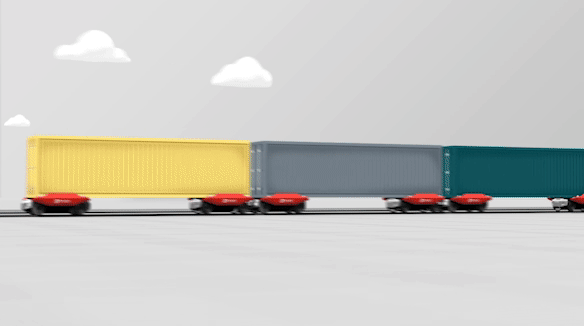Autonomous electric train startup addresses supply chain skills shortage

- Autonomous electric train cars in testing to enhance rail network utilization
- The solution aims to address the logistics labor shortage
Electric trains are of course an existing technology, as are autonomous or remote-operated trains. This startup based in California sought to answer the question of what would happen if the two were combined.
Parallel Systems, founded in 2020, recently stepped out of the shadows with its offering of autonomous battery-electric rail vehicles. These electric trains, or rather better identified as autonomous electric rail cars, are able to run on existing railway infrastructure.
Electric train cars that drive themselves!
The startup, which sees three former SpaceX engineers as founders, aims to create a more efficient, decarbonized freight network leveraging current railway facilities. Parallel has raised US$49.55 million in Series A funds, for a total of US$53.15 million raised to date towards that goal.
“We founded Parallel to allow railroads to open new markets, increase infrastructure utilization, and improve service to accelerate freight decarbonization,” said Matt Soule, Co-founder and CEO of Parallel Systems.
The individual autonomous electric train cars, which do not need a locomotive as each car is powered, aim for higher flexibility in shipping by rail, as each individual car can join together to form “platoons” as the company calls it, or split off to multiple destinations en route.
With minimum load requirements reduced from filling up an entire train to filling a single electric train car, the rail shipping network also becomes more responsive and will be able to serve more routes at various ranges, while reducing waiting times associated with loading an entire train with freight to make the service economical.
This also allows the cars to bypass congested switching yards, which sort and reassemble freight to secondary trains, saving transit time for faster delivery times.
Safety and sustainability in the supply chain
Amidst concerns about the safety of autonomous vehicles, Parallel Systems leveraged a camera-based system and redundant braking, which promises that the electric train cars can stop safely and autonomously up to 10 times quicker than a regular train while maintaining safe speeds based on track conditions.
With sustainability also becoming a focal point for an increasing number of firms and industries, it becomes clear that the supply chain has a large part to play in green, sustainable businesses.
As the US plays catchup in adopting electric vehicles, the electric train cars, as part of the goal to a cleaner rail system, use about 25% of the energy of a semi-truck. This, according to the company, means smaller batteries, less strain on the grid, and lower charging times.
Addressing the logistics skills shortage
Soule shared in a company press statement that their business model is to give railroads the tools to convert a part of the US$700 billion US trucking industry to rail.
This comes on the heels of the trucking industry looking at 20% of all professional truck driving jobs worldwide unfulfilled. The US alone is looking at an industry that is short 80,000 drivers today, and that it may be short 160,000 drivers by 2030, according to the American Trucking Association.
However, the introduction of technologies such as autonomous vehicles, with the autonomous electric rail vehicles mentioned above as an example, serves as a disruptor to existing global supply chains as well. As existing supply chains adapt to not only disruptive technologies, as well as the now ever-present threat of COVID 19, 2022 does not look like a good year for saying goodbye to supply chain woes.
Still, one of the tech trends for 2022 is for organizations to move towards “self-driving”, which in turn calls for said enterprises to rethink how they can strategically evolve and leverage data, technology, and processes that would allow them to deliver customer value using means that are more self-sufficient, autonomous and scalable. This is yet another step in the process for the logistics industry and to restore supply chains worldwide.








